Follow the instructions below to change the Web Server options.
1. Click on "Configuration" in the Main Menu to open the "Configuration" window.
| Standard Edition | Advanced Edition | Enterprise Edition |
|---|---|---|
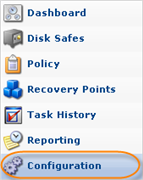 |
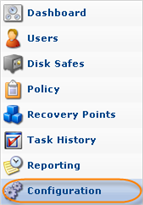 |
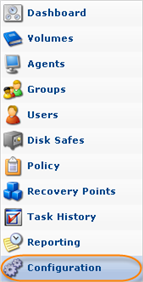 |
2. In the Configuration menu, click on "Server Information."
| Standard Edition | Advanced Edition, Enterprise Edition |
|---|---|
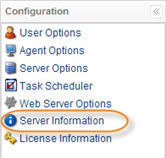 |
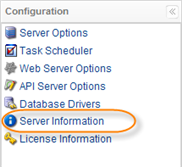 |
3. The "Server Information" window opens.
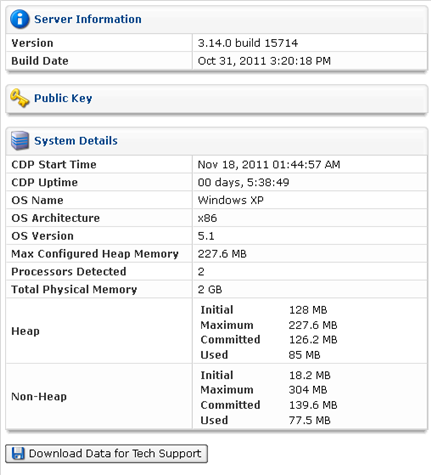
Here you can access useful server, license, and system information concerning the work of the CDP system.
Server Information
- Version - The version and build number of the currently installed CDP system.
- Build Date - Date and time of the current build.
Public Key
Here you can copy the Public Key (Enterprise/Advanced Edition).
System Details
- CDP Start Time - Indicates when the system was started.
- CDP Uptime - The uptime of the system.
- OS Name - Name of the Operating System installed on the computer. For example, "Windows 2003."
- OS Architecture - The conceptual structure of the Operating System installed on the computer. For example, "x86" for Windows.
- OS Version - Version of the Operating System installed on the computer. For example, 5.2.
- Max Configured Heap Memory - Maximum heap size configured on the computer.
- Processors Detected - Total number of processors on the computer. For example, 2.
- Free Physical Memory - The value is changing online. For example, 271.4 MB.
- Total Physical Memory - For example, 1023.4 MB.
- Heap - The current Task heap memory usage.
- Initial
- Maximum - Amount of memory allocated to the CDP Server by default (in server.conf file)
- Committed
- Used - This value can help you to check available memory for new tasks.

Tips - Keep new tasks from launching when CDP Server system memory is too low.
- We highly recommend you use caution when adjusting these settings.
- Non-Heap
- Initial
- Maximum
- Committed
- Used
The Windows subsystem on Windows NT provides high-level memory management functions that make it easy for applications to build dynamic data structures, provide compatibility with previous versions of Windows, and create buffers and temporary placeholders for system functions. These memory management functions return handles and pointers to blocks of memory that are allocated at run time and managed by an entity called the heap. The heap's primary function is to efficiently manage the memory and address space of a process for an application.
Heap memory stores all instances or attributes, constructors, and methods of a class/object. See also: Configuring Heap Memory.
Download Data for Tech Support
This option streams a zip of the logs directory. The .zip file contains the /logs and /conf directories.
See Downloading Data for Technical Support for more information on how to download files for tech support and for detailed information about the /logs and /conf directories.
